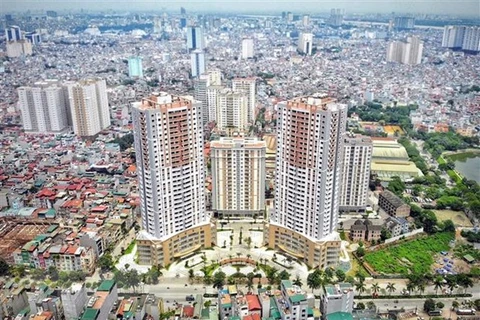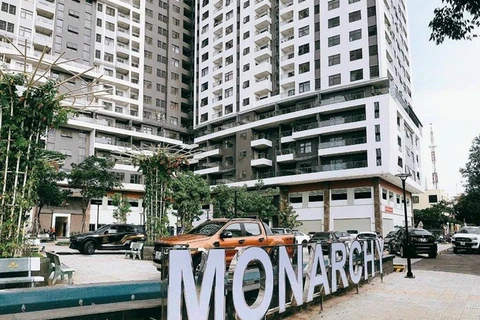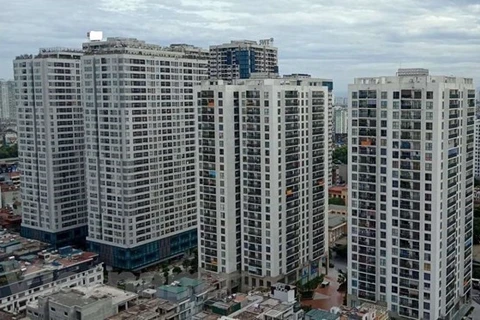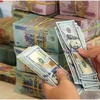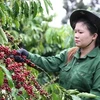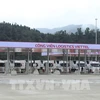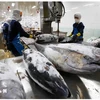 The absorption capacity of the real estate market in the first quarter of 2021 was better than the same period in 2020. (Photo: thoibaotaichinh.vn)
The absorption capacity of the real estate market in the first quarter of 2021 was better than the same period in 2020. (Photo: thoibaotaichinh.vn) Hanoi (VNS/VNA) - The country’s apartment inventory was estimated at some 3,300 units by the end of the first quarter of the year, falling 5,700 units compared to the same period last year, according to the Ministry of Construction (MoC).
This shows that the absorption capacity of the real estate market in the first quarter of 2021 was better than the same period in 2020 and the previous quarter, the ministry added.
While the provinces and cities with large urban areas such as Hanoi, Hai Phong, Ho Chi Minh City and Quang Ninh as well as localities with strong urbanisation rates (Nghe An, Hung Yen, Lam Dong and Ba Ria-Vung Tau) have still maintained the stable development of the property market, the absorption rate in localities such as Phu Tho, Vinh Phuc and Ha Tinh provinces has been low.
According to market research firms, while the absorption rate of residential real estate has gradually been improving, the transaction volume and absorption capacity for tourist and resort real estate has been limited. The average transaction rate in the quarter was only about 30 percent for the resort property segment.
Projects which have full legal status, ensuring progress and transparent information developed by some large reputable investors have higher transaction rates.
The MoC said in the three month period, according to data from the Department of Construction of the localities that have reported, there were 25,386 successful real estate transactions. The total transaction volume decreased by about 86 percent compared to the fourth quarter of 2020. In Hanoi alone, there were 5,571 successful transactions while in HCM City there were 3,449.
There were 11,011 successful transactions in the North; 8,307 in in the Central region and 6,068 in the South. In general, the successful transactions were mainly in the affordable housing segment. The number of high-end residential real estate transactions decreased compared to the previous quarter.
The ministry said the number of apartments eligible for sale in the first quarter of 2021 increased. In the North, there are 47 projects with 14,451 apartments, the Central region 21 projects with 5,788 apartments and the South 20 projects with 5,780 apartments. In Hanoi alone, there were 10 projects with 7,062 apartments and HCM City five projects with 3,449 apartments.
In the January-March period, the number of properties assessed by the ministry was 2,041 apartments (equivalent to about 36 percent compared to the fourth quarter of 2020); and 250 condotels. Notably, there were no officetels and resort villas assessed in the period./.
VNA
